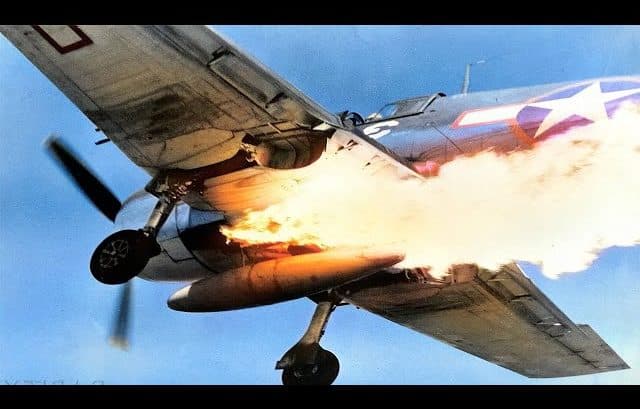Captain David McCampbell and his wingman, Ensign Roy Rushing with their F6F Hellcats soared the skies above Luzon poised to hunt the notorious Japanese Zeroes.
Soon, they encountered a massive formation made up of 60 Japanese fighters, but the two men were undeterred. They soon realized that after a series of fiery dice attacks, the Japs couldn’t counter their intricate, high-G, coordinated assaults.
The exploits of these Hellcat pilots would forever leave a mark in combat aviation history.
Growing Into Its Own
The F6F Hellcat was built as an enhanced variant of Grumman’s F4F Wildcat. The Wildcat, when pitched against Japan’s Mitsubishi Zero, showed numerous limitations, such as a lack of speed and maneuverability, which were exceptionally crucial for dogfights.
Thus, the Navy ordered Grumman to build an enhanced version as the Wildcat’s replacement- the F6F Hellcat. Nevertheless, the Hellcat rapidly evolved into its own distinct platform.
Largest Wings
The Hellcat was fitted with bigger wings, a more sizable propeller, more powerful engines, and a redesigned landing gear. It was powered by a Pratt and Whitney R-2800-10W double wasp engine with over 2,200 hp allowing it to reach a maximum speed of 390 miles per hour, a combat range of 945 miles, and a service ceiling of 37,000 feet.
The aircraft also measured approximately 43 feet in length, had a wingspan of 42 feet, a height of 13 feet, it had the largest wings of any WWII fighter covering an area of 334 square feet.
The Zero Killer
In early 1944, Grumman introduced a night fighter variant of the Hellcat which was equipped with a radar.
It quickly enhanced its air victories during the day and nighttime operations, earning nicknames like the Big Blue Blanket and the Zero Killer.
Largest Naval Engagement
Near the end of the war, Japanese naval officers still believed they could deliver a significant blow to American naval forces. The Empire planned to use land-based aircraft stationed in Formosa and the Philippines to compensate for its carrier losses.
As the First Mobile Fleet set sail from Kure, Japan, the stage was set for the biggest Naval engagement of World War II.
Birth of Two Aces
As the Battle of Leyte Gulf roared in one of its most epic onsets of naval history, two F6F pilots darted across these firelit heavens above the Philippines. Captain David McCampbell and his wingman, Ensign Roy Rushing stumbled upon a formidable squadron of 60 Japanese aircraft, which included the dreaded Japanese Zeroes.
Despite these overwhelming odds, they dove into the enemy’s heart repeatedly, unleashing a hailstorm of bullets from their six 0.50-caliber machine guns. The duo executed a number of dive attacks, leaving the enemy unable to do an effective counter-offensive.
“We’d make an attack, keep our altitude advantage and speed, and go down again,” Campbell recalled in an interview years later.
The Zeroes are simply no match for the Hellcat’s agility and velocity. The duo obliterated a staggering 14 aircraft, an unparalleled feat in the history of aviation. Both of them also earned the “ace in a day status,” as they downed five or more warplanes each during this incredible feat.



